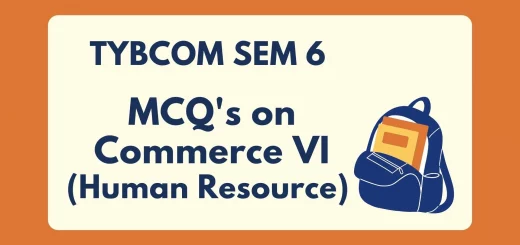Investment Accounting AS 13 | Free Financial Accounting Lectures and Notes
Table of Contents
Investment Accounting AS 13
Investment Meaning
AS 13 deals with accounting for investments made by an enterprise in another enterprise and the disclosure of such investments in the financial statements. However, this accounting standard does not deal with the following aspects of investment:
- the basis or criteria for recognition of interest, dividends, and rentals earned on investments
- operating or finance leases
- investments of:
- retirement benefit plans and life insurance enterprises
- mutual funds
- Venture Capital funds and/or related asset management companies
- banks and financial institutions formed under central or state government or under Companies Act, 1956
Forms of Investment
An enterprise holds investments for a variety of reasons. Such investments form a significant aspect of the operations of an enterprise in certain cases. Therefore, the evaluation of the performance of such an enterprise depends upon the return earned through such investments. Now, these investments can be in the form of certificates or documents such as shares of an enterprise or they can be in a physical form like building.
Furthermore, the investment may be a debt other than short or long term loan or trade debt. Such an investment represents the monetary amount owed to the holder of such an investment who earns an interest for lending such an amount. On the other hand, an enterprise may invest in the net assets of another company by acquiring equity shares of such a company. Now, the investments for which there exists an active market, the value of such investments shall be taken as the market value. This is because the market value provides the closest estimate for fair value of such investments. The market value is nothing but the amount that is received from the sale of an investment in the open market.
Classification of Investments
The financial statement of an enterprise presents fixed assets, investments and current assets into different categories. As far as investments are concerned, these are classified into long term investments and current investments.
(i) Current Investments
A current investment refers to an investment that is readily realizable and is held for not more than one year from the date on which such an investment is made.
(ii) Long Term Investments
Long term investment refers to an investment other than the current investment even though such investments are readily marketable.
Cost of Investments
Investment Acquired
The total cost of investment consists of the charges incurred to acquire such an investment. These may include any brokerage, fees, and duties.
Investment Acquired by Issue of Shares
There are scenarios where an investment is acquired wholly or partly by issuing shares or other securities. The acquisition costs of investments in such a case is the fair value of the securities issued.
This fair value of shares issued can be determined by considering the issue price of such securities estimated by the statutory authorities. Furthermore, such a fair value may not be equal to the nominal or par value of securities issued.
Investment Acquired in Exchange of Another Asset
Some enterprises may acquire an investment by wholly or partly exchanging another asset. Thus, the acquisition cost of such an investment is the fair value of the asset exchanged.
However, it would be appropriate for an enterprise to determine the fair value of the investment acquired if such a value can be determined readily.
Investment Acquired From Pre-Acquisition Benefits
Typically, interest, dividends or rentals earned through an investment are regarded as income. However, in some cases such inflows are not considered as income. Rather, they represent recovery of cost.
For instance, an enterprise is yet to acquire an interest bearing investment for which the interest becomes due. Such an interest is not regarded as an income. Rather it is included in the price paid for the investment.
Thus, when such an enterprise receives interest subsequently, it is allocated between pre-acquisition and post-acquisition periods. The pre-acquisition portion of the interest received is deducted from the cost of such an investment.
Likewise, an enterprise may treat the dividends on equity shares declared from pre-acquisition profits in a similar way.
However, where it is challenging to allocate such an income between pre and post acquisition periods, the enterprise may reduce the cost of its investment by the amount of dividends receivable. This can only happen in cases where the dividends to be received clearly represent the recovery of a portion of cost of investment.
Investment Acquired Through Rights Shares
There are scenarios where an enterprise offers rights shares to its existing shareholders in order to provide any dilution of shares. In such cases, if the existing shareholders subscribe to the Rights shares, the cost of such shares is added to their existing holding in the company.
However, if rights shares are not subscribed by the existing shareholders, then such shares are sold in the market and the proceeds received are represented in the P&L statement.
Furthermore, there can be cases where investments are acquired on cum right basis. But when such investment become ex-right, their market value turns out to be lower than the cost at which such an investment was acquired. Thus, the sale proceeds would be utilized to reduce the carrying amount of these investments to the market value.
(i) Current Investments
To determine the carrying amount for current investments to be stated in the Balance sheet, lower of cost or fair value of such an investment must be considered.
Typically, the value of individual current investments are considered to determine the carrying amount of such investments.
Furthermore, to value the current investments, it is not appropriate to consider the overall value of such investments. This is because there can be cases where an enterprise would only want to know the value of a specific category of current investments and not each and every individual investment.
Therefore, in such cases it is prudent to consider lower of the cost or fair value of a current asset category wise.
In addition to this, if there is any decline in the fair value or any reversal of such a decline, then they are to be included in the P&L of the enterprise.
(ii) Long Term Investments
The carrying amount of the long term investment is typically the cost of such an investment. However, if there is a permanent reduction in the value of the long term investment, the carrying amount of such an investment is also reduced.
Also, such a reduction is charged to P&L statement. However, such a reduction in the carrying amount is reversed when there is an increase in the value of such an investment or the reasons that lead to a reduction in its carrying amount do not exist anymore.
The value of the long term investment can be determined by considering the following factors:
- market value of investment
- investee’s assets and profits
- expected cash flows from such an investment
- type and extent of investors stake in the investee’s asset
Furthermore, the carrying amount of a long term investment is determined by considering the cost of every individual investment made.
Disposal of Investments
When an asset is disposed of, the difference between proceeds received from disposal and the carrying amount of investment is recognized in the P&L statement. Such a difference is also adjusted for any expenses incurred with respect to disposal of such investments.
However, there are cases where only a part of an individual investment is disposed of. In such a case, the carrying amount of a portion of such investment is determined on the basis of the average carrying amount of the total investment.
Reclassification of Investments
Following are the ways in which investments can be reclassified.
- The first one relates to the case where long term investments are reclassified as current investments. In such a case, investments are transferred at an amount that is lower of cost and its carrying amount at the date of transfer.
- The second one relates to the case where current investments are reclassified as long term investments. In such a case, investments are transferred at an amount that is lower of cost and fair value at the date of transfer.
Disclosure
An enterprise needs to make the following disclosures pertaining to investments made in its P&L statement.
- Accounting policies followed to determine the carrying amount of investments
- Amounts represented in P&L statement for:
- Interest, dividends, and rentals on current investments and long term investments separately. Further, an enterprise must state the gross income and the amount of TDS must be shown under advance taxes paid.
- Profit and losses arising on disposing current investments and changes arising in the carrying amount of such investments
- Profit and losses arising on disposing of long term investments and changes arising in the carrying amount of such investments
- Major restrictions on ownership right, realisability of investments, or the remittance of income and disposal proceeds
- The total amount of quoted and unquoted investments. This would help in determining the total market value of quoted investments.
- Other disclosures as demanded by the statutory authority


